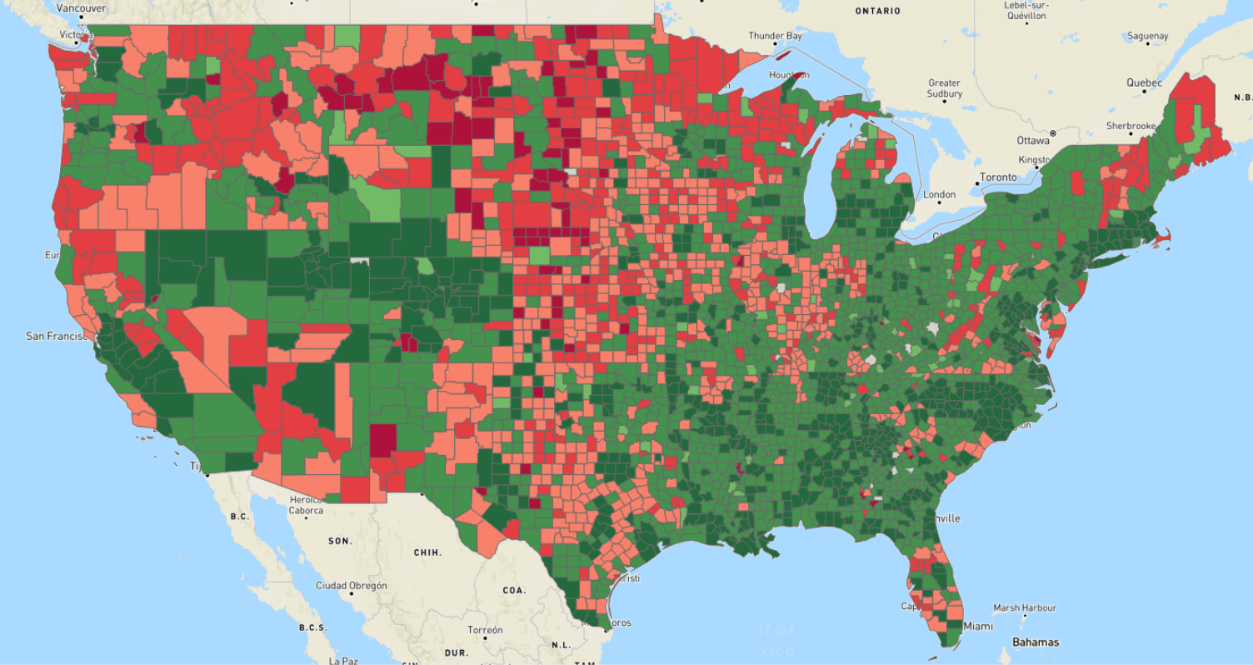Mar 18
2020
Carrot Health COVID-19 Risk Index Predicts Populations Most Susceptible to Coronavirus Outbreaks
Carrot Health has developed the COVID-19 Risk Index, which predicts those populations and communities that are most susceptible to the negative impacts from a coronavirus outbreak. The risk index does not predict where and when an outbreak will occur, rather it helps inform public health and intervention decisions at the national, regional and community levels by identifying who is most vulnerable.
Because risk variations across a single metro area can be significant, Carrot Health is also preparing to publish an interactive dashboard that shows the COVID-19 Risk Index and allows users to drill into the data down to the zip code level to identify granular pockets of risk and model different outbreak scenarios. This information can help inform coordination of resources to protect those who are most vulnerable.

“With the right data, public health personnel can turn panic and passivity into preparation and progress, directing intervention efforts and resources more effectively and appropriately,” said Carrot Health CEO Kurt Waltenbaugh. “It allows for better informed decisions about the types of advance preparations that are necessary and where to divert scarce resources like ventilators and test kits in the event of an outbreak, and identifies populations that require closer monitoring so rapid interventions can be staged with when circumstances warrant.”
Carrot Health Insights | Predicting Coronavirus Risk, which includes multiple charts and graphs breaking down population-based risk, can be accessed online here. It will be updated as more data and scientific studies become available.
The COVID-19 Risk Index is based on research published in two studies, Clinical Characteristics of 138 Hospitalized Patients With 2019 Novel Coronavirus–Infected Pneumonia in Wuhan, China (American Medical Association) and Clinical Characteristics of Coronavirus Disease 2019 in China (New England Journal of Medicine), which identify a number of factors that influence both transmission risk and severity of impact. These factors include:
- Smoking status
- COPD status
- High blood pressure status
- Diabetes status
- Age (increase in risk for those over 65)
- Gender (increase in risk for males)
Research also suggests that approximately 2% to 4% of people with the virus die, depending on where they live. So far, deaths are higher in males and much higher for those over age 65.
By coupling this information with its extensive database of social determinants of health information and consumer insights, Carrot Health was able to predict COVID-19 vulnerabilities. The following map shows forecasted COVID-19 population risk at the county level (red = high, green = low):

Source: Carrot Health
New data and additional studies might change the assumptions upon which this initial analysis was based. In addition, the actual infection rate may be higher than reported, which would mean that mortality rates could be lower than currently estimated. To that end, the COVID-19 Risk Index will evolve over time.
“These insights are not meant to inspire panic, but to promote thoughtful preparation. Data-driven insights will be critical in saving lives, deploying resources, and minimizing disruption, both for this public health crisis and for future ones. While the U.S. currently remains less affected than some parts of the world, it is nonetheless more vulnerable due to a healthcare system that does not promote prevention or early intervention,” said Waltenbaugh. “Fortunately, we have powerful data tools at our disposal to better prepare and deploy resources, and a culture of helping those who are vulnerable.”